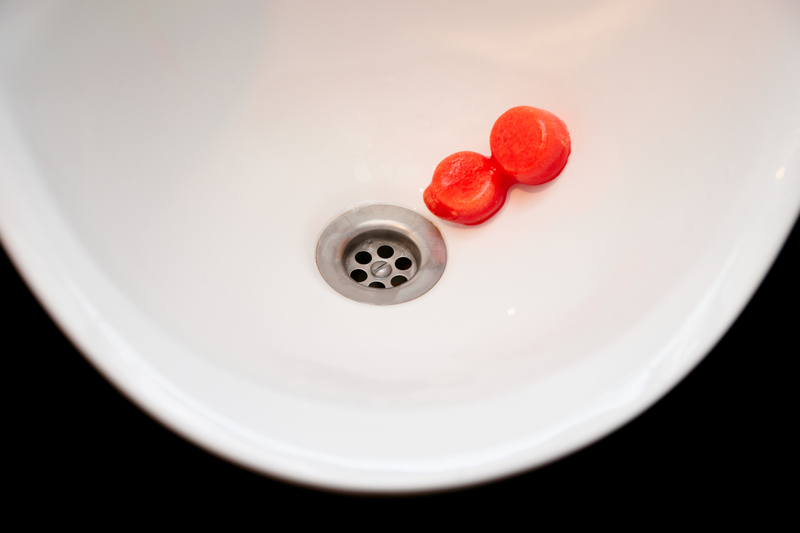Healthy Living: Transform Your Home with Dust and Allergen Management
Posted on 12/06/2025
Healthy Living: Transform Your Home with Dust and Allergen Management
Are you searching for ways to improve your home's air quality and boost your overall well-being? Embracing a lifestyle dedicated to healthy living starts with the space where you spend most of your time--your home. A crucial yet often overlooked aspect is managing dust and allergens, substances that can negatively impact respiratory health, sleep, and quality of life. This comprehensive guide provides essential tips and actionable strategies for transforming your home environment by controlling dust and allergens. Let's discover how you can make every breath at home cleaner and healthier!
Understanding the Importance of Dust and Allergen Management
The air quality inside your living space can be significantly more polluted than the air outdoors. Contaminants such as dust mites, pet dander, pollen, mold spores, and chemical residues accumulate and invade your home undetected. Children, seniors, and individuals with respiratory issues or allergies are most vulnerable to indoor pollutants, making allergen management essential for a healthy lifestyle.
What Is Dust?
Household dust is a complex mixture that may include:
- Dead skin cells from humans and pets
- Textile fibers
- Pollen grains
- Dirt and soil particles tracked from outdoors
- Microscopic insect parts
- Mold spores
Dust accumulation can trigger allergies and exacerbate asthma symptoms when not properly managed.
Understanding Allergens in the Home
Allergens are substances that provoke an allergic reaction. Common household allergens include:
- Dust mites and their waste
- Pet dander
- Mold spores
- Pollens carried indoors on clothing and shoes
- Cockroach debris
Effective allergen management not only improves indoor air quality but also helps keep sinus problems, sneezing, and watery eyes at bay.

Why is Dust and Allergen Management Vital for Healthy Living?
A particulate-rich atmosphere in your home is linked to numerous health concerns. Here's why it matters to manage indoor allergies and dust:
- Reduces respiratory problems like asthma, bronchitis, and allergic rhinitis
- Prevents chronic fatigue, headaches, and even eczema flare-ups
- Promotes restful sleep as allergens can disrupt breathing
- Enhances immune system function, particularly in children and seniors
- Supports cognitive function by reducing inflammatory responses in the body
Transforming your living space into a sanctuary with minimal allergens and airborne dust is not just a matter of cleanliness--it's an investment in your mental and physical health.
How to Transform Your Home: Practical Dust and Allergen Management Tips
Creating an allergen-free home takes commitment and regular maintenance, but the rewards are immense. Here's how you can drastically improve indoor air quality with targeted actions:
1. Invest in a High-Efficiency Vacuum Cleaner
- Use vacuums equipped with HEPA (High-Efficiency Particulate Air) filters to capture microscopic dust, allergens, and pet dander.
- Vacuum all carpeted areas, rugs, and upholstery at least twice a week for maximum dust reduction.
- Don't forget to vacuum underneath furniture and along baseboards, areas often neglected but prone to heavy accumulation.
2. Dust with Damp Cloths and Microfiber
- Avoid dry dusting, which simply stirs dust back into the air. Use slightly damp microfiber cloths to lock dust in and remove it from surfaces.
- Remember to clean window sills, blinds, ceiling fans, and the tops of cabinets--common dust hotspots.
3. Control Humidity Levels
- Maintain relative humidity indoors between 35% and 50% to inhibit the growth of dust mites, bacteria, and mold.
- Use a dehumidifier during humid seasons and ensure proper ventilation in bathrooms and kitchens.
4. Regularly Wash Bedding and Soft Furnishings
- Launder bed linens, pillowcases, and blankets weekly in hot water (at least 130?F / 54?C) to eradicate dust mites.
- Wash curtains, cushion covers, and throws frequently, especially in homes with pets.
- Consider allergen-proof covers for mattresses and pillows.
5. Minimize Clutter and Soft Surfaces
- Clutter attracts dust! Keep shelves, counters, and floors clear for easier cleaning and less dust build-up.
- Opt for furniture with smooth surfaces, leather, or vinyl rather than fabric, which harbors more allergens.
6. Implement a No-Shoes Policy
- Ask family and visitors to remove shoes at the door to prevent outdoor pollen, soil, and dust from being tracked through the home.
7. Address Mold and Dampness Promptly
- Fix leaky pipes, roofs, or windows to prevent mold.
- Clean visible mold using appropriate cleaners and wear gloves and a mask during removal.
8. Use High-Quality Air Purifiers
- HEPA-filter air purifiers are excellent for capturing airborne allergens such as dust, pollen, and pet dander.
- Place purifiers in bedrooms, living areas, and any room where family members spend significant time.
9. Groom Pets Regularly
- Bathe and brush pets often to reduce shedding and pet dander.
- Keep pets out of bedrooms and off furniture if possible.
10. Replace Air Filters Frequently
- Change HVAC and furnace filters every 1-3 months, especially during high-allergy seasons.
- Choose filters with a Minimum Efficiency Reporting Value (MERV) of 11 or higher for improved allergen capture.
Allergen-Proof Each Room in Your Home
Bedrooms
- Use allergy-proof mattresses and pillow encasements
- Keep pets out and avoid stuffed toys on beds
- Wash sheets, pillowcases, and blankets weekly
- Limit carpeting and heavy draperies
Living Rooms
- Choose leather or vinyl furniture over fabric
- Clean electronics and entertainment centers often--these are dust magnets
- Vacuum and mop floors regularly
- Replace heavy curtains with washable shades or blinds
Kitchens and Bathrooms
- Ventilate well to prevent moisture build-up and mold growth
- Clean under sinks and refrigerators where mold and dust accumulate
- Repair any plumbing leaks swiftly
- Use tile, vinyl, or laminate flooring that is easy to clean
Entryways
- Place doormats outside and inside all entrances
- Implement a strict "shoes-off" rule
- Store coats, hats, and outdoor gear away from common areas
- Wipe down door frames and windowsills frequently
Natural and Non-Toxic Options for Dust and Allergen Control
Many conventional cleaning products contain volatile organic compounds (VOCs) that can worsen indoor air quality. Opt for non-toxic, natural solutions wherever possible:
- Mix water with plain white vinegar for a powerful, natural surface cleaner
- Use baking soda to sanitize and deodorize soft furnishings and carpets
- Lucky bamboo, spider plants, and snake plants act as natural air purifiers
- Steer clear of aerosol sprays or heavily fragranced products
Maintenance Schedule: Keep Dust and Allergens at Bay
An effective management plan for allergens and household dust means establishing a regular cleaning routine:
- Daily: Wipe high-traffic surfaces, kitchen counters, and entryways
- Weekly: Vacuum floors, wash bedding, clean bathrooms, mop hard floors
- Monthly: Dust ceiling fans, baseboards, window sills, blinds, and vent covers
- Seasonally: Wash curtains, professionally clean carpets and upholstery, clean HVAC vents
Beyond Cleaning: Lifestyle Changes for Cleaner Indoor Air
While cleaning and maintenance are necessary, a few simple lifestyle adjustments can also support ongoing healthy living through allergen reduction:
- Avoid smoking indoors: Tobacco smoke contains numerous lung irritants and allergens
- Ventilate the home daily: Open windows briefly (unless pollen counts are very high) to exchange stale indoor air
- Do allergy checks: Stay informed about local pollen and mold forecasts, and take special precautions during high-count days
- Use essential oil diffusers wisely: Some individuals are sensitive to fragrances; always test in small areas first

FAQs: Transforming Home Air Quality and Allergen Management
What is the single most effective way to reduce indoor allergens?
Routine vacuuming with a HEPA filter and regular washing of bedding and soft furnishings are among the top ways to slash indoor allergens. Consistency is key!
How often should I change air filters in my home?
Ideally, replace them every 2-3 months, or more frequently if you have pets, allergies, or live in an area with high pollen counts.
Can indoor plants worsen allergies?
Some houseplants may harbor mold in their soil, but many varieties like spider plants and snake plants actually help filter indoor air. Choose wisely and maintain good care practices.
Should I remove all carpets and rugs?
Not necessarily. If you or your family suffer from allergies, minimizing wall-to-wall carpeting and switching to washable area rugs can significantly reduce dust and allergens. Hard surfaces are easier to keep clean.
Final Thoughts: Breathe Easier & Embrace Healthy Home Living
Implementing an effective dust and allergen management strategy is one of the best ways to foster a healthier, more comfortable home environment. Regular cleaning, thoughtful home design, and mindful lifestyle changes will help you and your family breathe easier every day. Remember, transforming your home is a journey, but each positive step you take brings you closer to a cleaner, healthier future where you can thrive.
Start today--transform your living space, safeguard your health, and enjoy the peace of mind that comes from proactive dust and allergen control!




